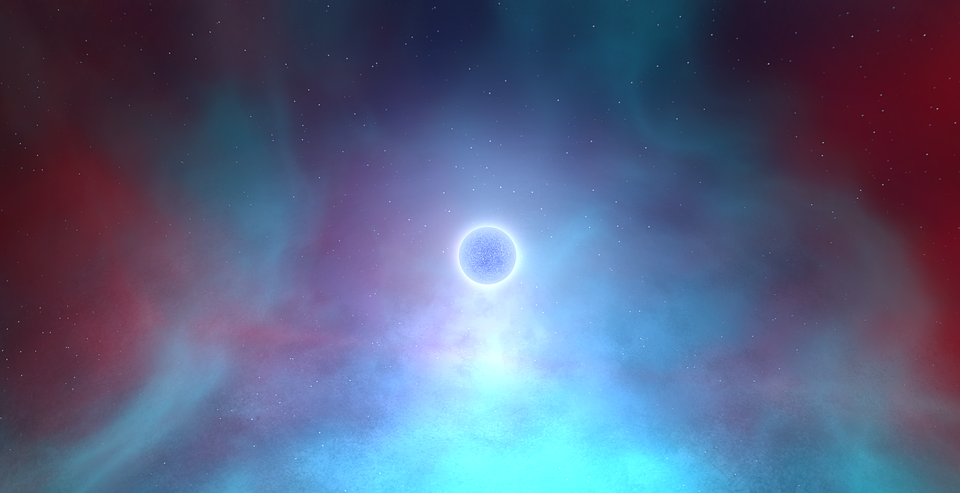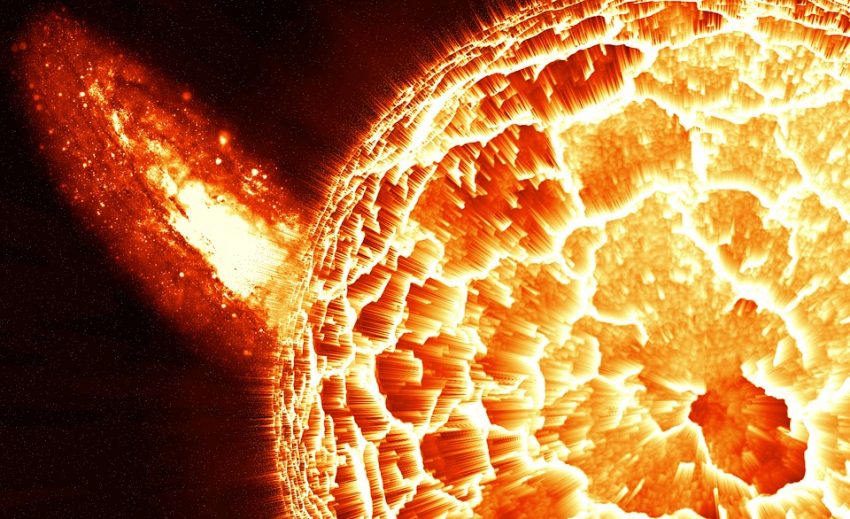The story goes back to 4.6 billion years ago when gravity pulled a cloud of interstellar gas and dust together. The cloud was part of a much bigger cloud called a nebula. At some point, it is assumed that a shockwave from a nearby supernova explosion caused the cloud to collapse. When the shockwave of the star caused it to compress, the cloud fell on itself and created a disk of material surrounding it. Then, the pressure caused by the material was so powerful that the hydrogen atoms started to fuse into helium and released a significant amount of energy. That’s when our sun was born!
Although the sun gobbled up more than 99 % of all the materials in the disk, there was still some stuff left over. Under gravity, bits of the remaining stuff clumped together and big objects started colliding with bigger ones. As these objects merged together, they became big enough to be spheres and today, these spheres are called planets.
Out of the small fraction of material left, planets, asteroids and moons were formed and created a thin disk orbiting around the sun. Among the planets, scientists believe that Jupiter must have been the first planet to be formed. On the other hand, Earth’s rocky core formed near the sun because gaseous and icy materials couldn’t survive close to all that heat. So like that, the solar system that we know today was formed.
However, for some, the whole concept of planets circling the feeble remnant of a burned-out star looks like a scenario that’s nearing its end. Many studies have been published, predicting what will happen to the solar system in billions of years to come. While some claimed that massive stars would end their lives in an explosion, others predicted that the sun would grow too hot for anything on Earth to survive.
In simple words: The Solar System will be gone!
Is it true? How will it unfold? Let’s see!
The Sun Will Become a Red Giant and Swallow Inner Planets
 Most stars in the universe convert hydrogen into helium in their cores via nuclear fusion and are thus called “main sequence stars.” Over the course of their lives, the exterior pressure of fusion inside these stars balances out the interior pressure of gravity. However, once the core fusion stops, gravity takes the reins and starts compressing the main sequence star. “This then increases the internal temperature of the star and ignites a shell of hydrogen burning around the inert core,” says an explainer at Swinburne University of Technology in Australia. “Meanwhile, the helium core continues to contract and increase in temperature, which leads to an increased energy generation rate in the hydrogen shell. This causes the star to expand enormously and increase in luminosity –the star then becomes a red giant,” the explainer continues.
Most stars in the universe convert hydrogen into helium in their cores via nuclear fusion and are thus called “main sequence stars.” Over the course of their lives, the exterior pressure of fusion inside these stars balances out the interior pressure of gravity. However, once the core fusion stops, gravity takes the reins and starts compressing the main sequence star. “This then increases the internal temperature of the star and ignites a shell of hydrogen burning around the inert core,” says an explainer at Swinburne University of Technology in Australia. “Meanwhile, the helium core continues to contract and increase in temperature, which leads to an increased energy generation rate in the hydrogen shell. This causes the star to expand enormously and increase in luminosity –the star then becomes a red giant,” the explainer continues.
 Hence, a red giant can be referred to as a star in its final death stages. Once a star reaches that phase, it will stay that way for up to at least a billion years. Eventually, it will slowly contract and cool off to become a white dwarf. Once it becomes totally cold and radiates absolutely no energy, it will end its life as a black dwarf.
Hence, a red giant can be referred to as a star in its final death stages. Once a star reaches that phase, it will stay that way for up to at least a billion years. Eventually, it will slowly contract and cool off to become a white dwarf. Once it becomes totally cold and radiates absolutely no energy, it will end its life as a black dwarf.
So, according to a few experts, this is our sun’s destiny. In about five billion years, the sun’s core will run out of hydrogen and will turn into a red giant. Over the next million years, as it heads towards its subgiant phase, the sun will increase in brightness and radiate more energy. This could prove to be very catastrophic for the Earth as increasing radiation from the sun can sterilize the planet and extinguish all forms of life.
Eventually, the sun would change from a red giant to a white dwarf and by then, it would have already swallowed Venus, Mercury and many others too. And, that would be the end of the solar system.

